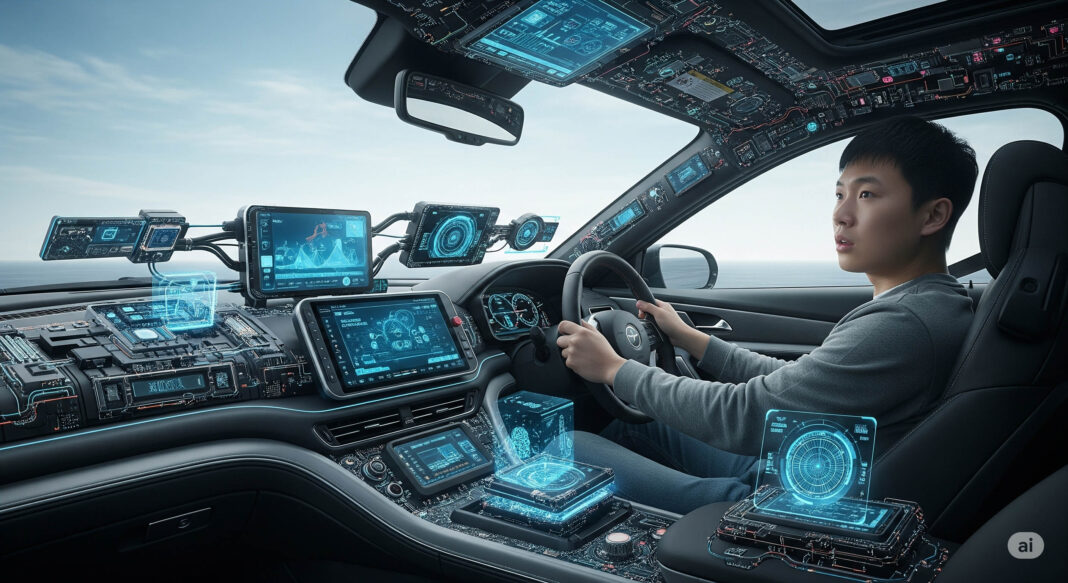Blind Spots Are Expanding
Listen up, drivers. A new study from the U.S. Department of Transportation’s Volpe Center isn’t just another boring report—it’s a wake-up call. They’ve been eyeballing six popular car models, from the Honda CR-V to the Chevrolet Suburban, and the results are clear: blind spots are getting bigger. They used a camera-based system to measure how much you can see from the driver’s seat, and the numbers are downright alarming. The forward blind zones in every one of these cars have ballooned in newer models. The Honda CR-V and Chevrolet Suburban are the worst offenders, with visibility dropping by up to 58%. That’s not just a little less scenic—it’s a major safety concern [U.S. Department of Transportation’s Volpe Center](https://www.volpe.dot.gov/).
You might think, ‘So what? I’ve got sensors and cameras.’ But here’s the deal: these blind spots are measured within a 10-meter radius, which is the average stopping distance at 10 mph. That’s the speed where blind spots often lead to crashes. The study shows that from 1997 to 2023, the visibility in these cars has plummeted. For example, the 1997 Honda CR-V let you see 68% of the area 10 meters ahead. Fast forward to 2022, and you’re down to a measly 28%. Chevrolet’s Suburban isn’t any better, dropping from 56% in 2000 to 28% in 2023. It’s time to pay attention, or you might find yourself in a collision you could’ve avoided [SAE International Journal of Transportation Safety](https://saemobilus.sae.org/content/05-01-01-0001/).
Why Are Cars Getting Bigger?
Cars aren’t just getting more tech-heavy; they’re getting physically larger. Over the last three decades, the average U.S. passenger vehicle has grown by 4 inches in width, 10 inches in length, 8 inches in height, and piled on an extra 1,000 pounds. This isn’t just about needing a bigger garage; it’s a serious safety issue. The Insurance Institute for Highway Safety (IIHS) found that vehicles with hoods over 40 inches tall are 45% more likely to kill pedestrians. And guess what? Pedestrian fatalities have spiked nearly 40% since 2000 [Insurance Institute for Highway Safety](https://www.iihs.org/).
Becky Mueller from IIHS, who co-authored the report, points out that vehicle design is a big part of the problem. Those massive side- and rear-view mirrors, the beefy A-pillars—it’s all adding up to block your view. And while there are rules about the minimum size of these parts, there’s no cap on how big they can get. ‘There just isn’t much guidance for manufacturers on how to minimize these blind zones,’ Mueller says. It’s like we’re driving tanks with the visibility of a submarine [Insurance Institute for Highway Safety](https://www.iihs.org/).
Safety Features: A Double-Edged Sword
Chevrolet’s Shad Balch claims their vehicles are safer than ever, thanks to a suite of tech like automatic emergency braking and HD Surround Vision cameras. ‘We believe in preventing collisions starting with an attentive driver and supported by technology,’ he says. Sounds great, right? But here’s the kicker: these features are compensating for the very visibility issues that these bigger cars create. It’s like putting a Band-Aid on a broken leg.
Other carmakers, like Volvo, are also jumping on the safety tech bandwagon. They’re rolling out systems designed to protect pedestrians and cyclists. But let’s be real: technology isn’t a magic bullet. It’s there to help, but it’s not foolproof. And while these features might save you from a crash, they don’t fix the root problem—cars that are designed in a way that makes it harder for you to see what’s around you [Chevrolet](https://www.chevrolet.com/).
The Road Ahead: What’s Next?
The IIHS isn’t stopping at this study. They’re expanding their research to 150 different vehicle models and will analyze crash data to see if there’s a direct link between these bigger blind spots and more crashes. This is crucial, especially when it comes to accidents involving pedestrians and cyclists, who are far more vulnerable than you in your steel cocoon.
If they find a strong connection, it’s not just about informing consumers—it’s about pushing for better vehicle designs. ‘We want to make recommendations that help manufacturers design vehicles with minimal blind zones,’ says Mueller. So, keep your eyes peeled, not just for what’s in front of you, but for what the future holds in terms of safer, smarter car designs. Because let’s face it, driving a tank isn’t the way to go if you want to keep the roads safe for everyone [Insurance Institute for Highway Safety](https://www.iihs.org/).
Key Facts Worth Knowing
- •💡 New car models have up to 58% less forward visibility due to larger blind spots.
- •💡 The average U.S. passenger vehicle has increased in size by 4 inches wider, 10 inches longer, 8 inches taller, and 1,000 pounds heavier over the last three decades.
- •💡 Vehicles with hood heights over 40 inches are 45% more likely to cause pedestrian fatalities.
- •💡 Pedestrian fatalities have increased by nearly 40% since 2000.
- •💡 Advanced safety technologies like automatic emergency braking are compensating for reduced visibility in newer car models.



